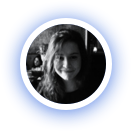Our process
Understand - To ensure our work is relevant to the technical reality, before we jump into the design phase, we look at the tech - from the low-level interactions with the CPU up to distributed systems of networked enclaves. What is Oak doing at each of these levels? And the contexts: where would Oak operate?
UX patterns for trust - What user interfaces are required for users to interact with policy? How do users differentiate between Oak (verifiable, secure) and non-Oak (unknown, potentially insecure) UI?
Applying to existing models - How does Oak integrate with models of computing that exist today. What user interfaces are required? How would this impact business models and software ecosystems?
Unlocking possibilities - Personal data in an Oak system is bound by strong guarantees of security and privacy. By dramatically lowering the risk of using personal data, what opportunities does this unlock for new products and services? Where will the biggest impact be on the computing world of the future? What new modes of interaction exist?
Resolve - Consolidate findings into a final deliverable, framed back to engineering teams to take advantage of the ideas as they begin building Oak into the hardware and operating systems of the future.




